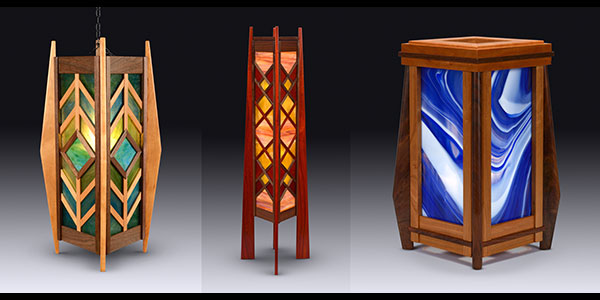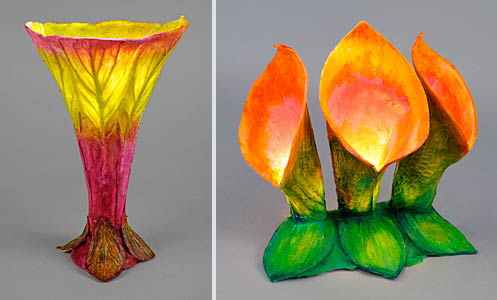How to Photograph a Lamp
How to photograph a lamp or an object that is lit from within.
The lighting set up is nothing out of ordinary. I shoot with two studio strobes bounced into oversize white umbrellas for diffused light. Sometimes I add a small softbox directly overhead to act like a rim light to separate the object from the background at the top.
This technique will only work if you’re using a DSLR and studio strobes for lighting. You can’t do it with a point and shoot camera, or even a DSLR if you’re using continuous lighting like daylight florescent or hot tungsten lights.
The trick is that the shutter speed needs to be slow enough to let ambient light effect the image, the ambient light in this case being the internal light from the lamp. Because of the slow shutter speed, the room needs to be relatively dark. The strobes light the outside of the object properly and the lighting from inside shows because of the longer shutter speed.
I use a DSLR with a macro lens to photograph artwork of any kind. When using studio strobes, I keep the camera set at 1/250 second, the sync shutter speed of the camera. And I set the F stop to the correct setting based on the amount of light the strobes are putting out. You can’t so this using the camera’s built in meter. The camera needs to be set on manual exposure. For maximum image quality, set the camera to the lowest ISO and set the shutter speed to the sync speed and let the F stop be determined by the intensity of the light. For the lighting I use, my ISO is 100, my shutter speed is 1/250 second and my F stop is normally F22.
So getting back to photographing objects that are lit from within. Keeping the F stop at F22, I reduced the shutter speed incrementally while shooting a picture at each new setting. Then I examined all the images on the computer and choose the one that looks the best. Reading the EXIF data of the chosen picture, I can see what the camera settings were. For the pictures of the wood lamps, my shutter speed at 1/4 second gave me the perfect balance of allowing the internal lighting to show in the image. For the porcelain lamps, a shutter speed of 1/2 second gave me the correct exposure.
This technique is also called “dragging the shutter.”




